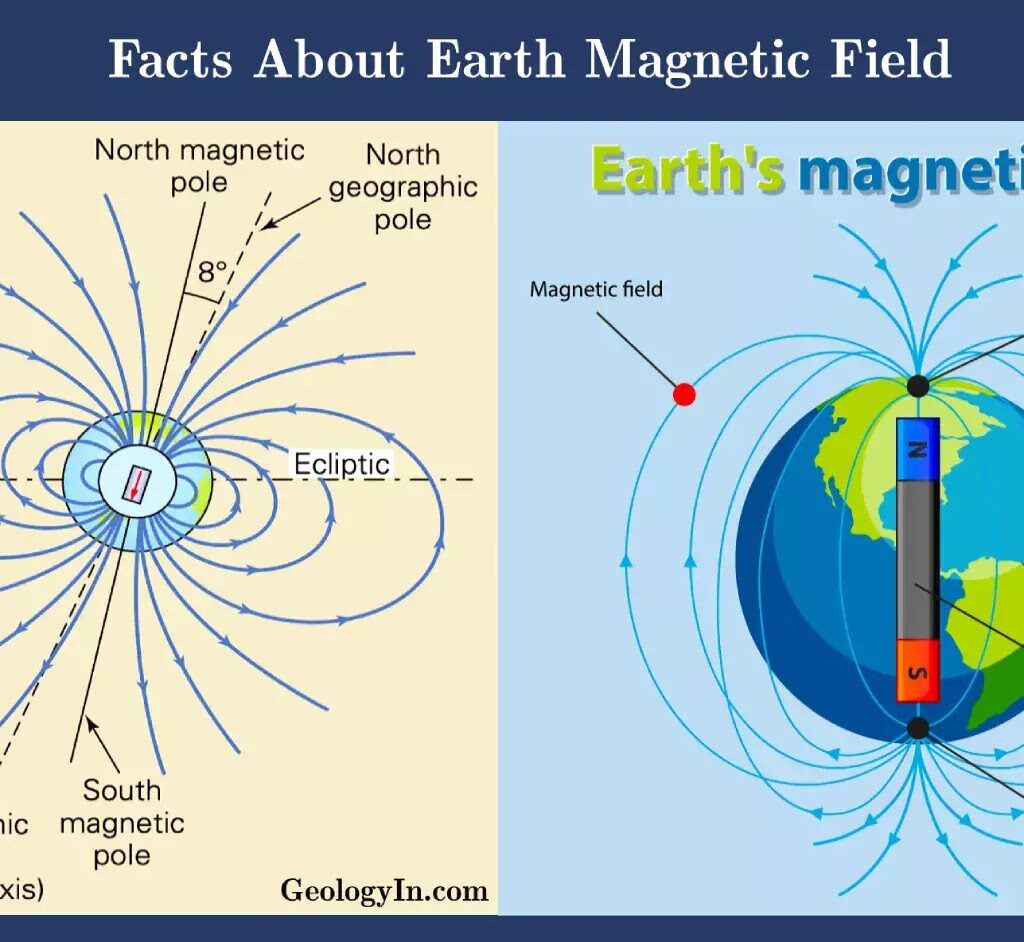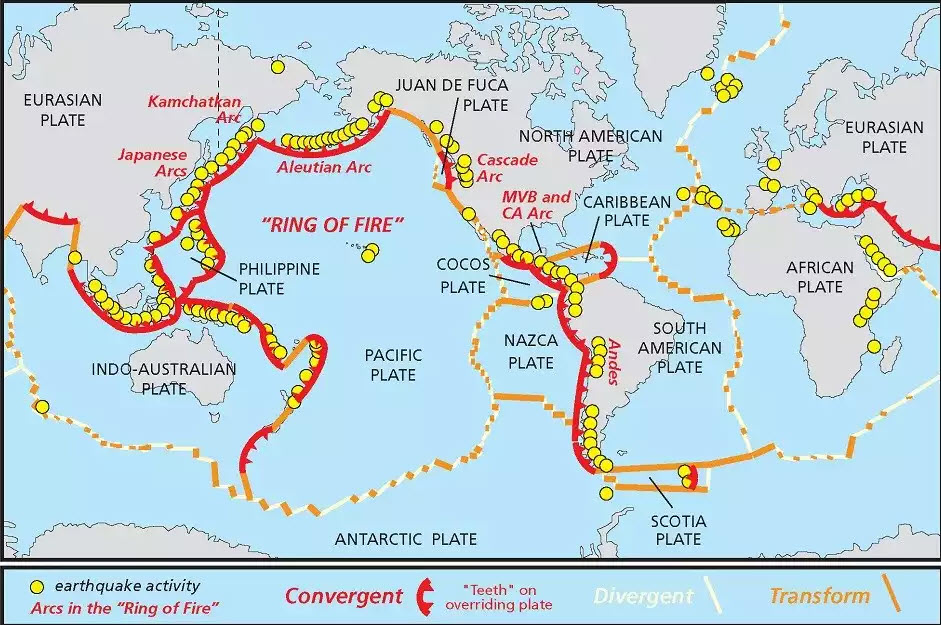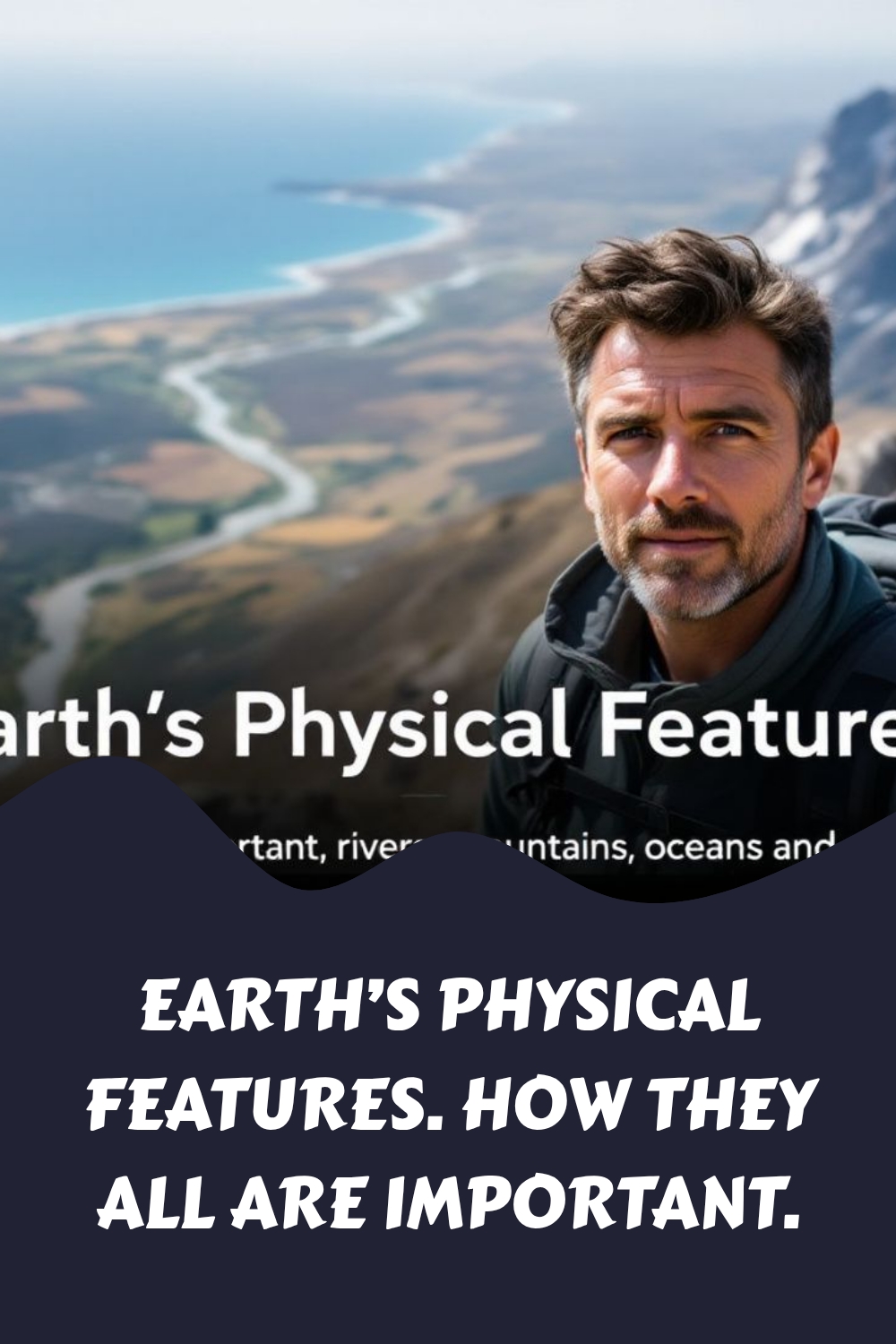Imagine looking at a map of the Earth with all its Physical Features. You see mountains touching the sky, rivers winding through lands, vast plains stretching far and wide, deep blue oceans hugging continents, and coastlines marking where land meets water.
Each of these features is vital to our world, but why? Many people know these features exist but might not understand their importance.
Mountains act like giants that affect weather patterns and host unique plants and animals. Rivers are nature’s highways that carry water across continents, creating valleys and canyons as they go.
Plains are Earth’s breadbaskets; where most of our food comes from. Oceans control the planet’s climate and are home to countless marine creatures. Coastlines protect lands from ocean storms and support rich ecosystems like coral reefs and mangroves.
Our article will take you on a journey to discover how each of these physical features plays a crucial role in shaping life on Earth.
Get ready for an adventure!
Key Takeaways
- Mountains affect weather and host unique life. They make rain fall in certain places by blocking clouds, which helps form rivers.
- Rivers shape the land by creating valleys and canyons. They are important for drinking water, farming, and homes for animals.
- Plains are where most food grows because they have good soil and flat land. Many people live there because it’s easy to build cities.
- Oceans control Earth’s temperature and hold many plants and animals. They take in carbon dioxide, helping the climate.
- Coastlines protect the land from storms and bring jobs through trade, tourism, and fishing. They also act as barriers against erosion.
Importance of Earth’s Physical Features
Earth’s physical features—such as mountains, valleys, plains, plateaus, rivers, lakes, and oceans—are fundamental to the planet’s structure, climate, ecosystems, and human life. These features are shaped by a combination of constructive forces (like volcanic activity and tectonic movement) and destructive forces (like erosion and weathering), creating the diverse and dynamic landscapes we observe today.
Influence on Climate and Weather
Mountains and Plateaus: Serve as natural barriers that influence weather patterns by blocking or redirecting wind and moisture, leading to phenomena like rain shadows and varied climates on either side.
Oceans and Lakes: Act as heat reservoirs, moderating global and local temperatures and driving ocean currents that distribute heat around the planet.
Rivers and Valleys: Channel water and nutrients, shaping local climates and supporting vegetation growth.
Support for Ecosystems and Biodiversity
Mountains and Forests: Provide habitats for a wide range of species, often acting as biodiversity hotspots.
Rivers, Lakes, and Wetlands: Sustain aquatic and terrestrial life, offering breeding grounds and migration routes for animals.
Plains and Plateaus: Support large-scale agriculture and grazing, which are essential for food production and human settlement.
Resource Provision
Minerals and Soils: Mountains and valleys are rich sources of minerals and fertile soils, vital for agriculture and industry.
Water Resources: Rivers and lakes are critical freshwater sources for drinking, irrigation, and hydropower.
Oceans: Provide food (fisheries), transportation routes, and regulate the global climate.
Natural Hazard Regulation
Tectonic Features: The movement of tectonic plates forms mountains and causes earthquakes and volcanic eruptions, which, while sometimes destructive, are also responsible for renewing Earth’s crust and creating new landforms.
Coastal and Riverine Features: Wetlands and floodplains help mitigate floods and storm surges, protecting human settlements.
Human Civilization and Development
Settlement and Agriculture: Plains and valleys have historically been preferred for human habitation due to their fertile soils and access to water.
Transportation and Trade: Rivers, lakes, and oceans have facilitated trade and cultural exchange throughout history.
Tourism and Recreation: Scenic landscapes attract tourism, supporting local economies.
Interconnected Systems
Earth’s physical features are part of interconnected systems—geosphere (land), hydrosphere (water), atmosphere (air), and biosphere (life). These systems interact continuously:
Landforms shape water flow and climate.
Climate and weather shape landforms through erosion and deposition.
Living organisms alter and are altered by their physical environment
Summary Table
| Physical Feature | Key Importance |
|---|---|
| Mountains | Climate regulation, biodiversity, resource provision |
| Valleys | Agriculture, habitat, water channeling |
| Plains | Agriculture, settlement, transportation |
| Plateaus | Agriculture, unique ecosystems, mineral resources |
| Rivers & Lakes | Freshwater, irrigation, transportation, biodiversity |
| Oceans | Climate regulation, food, transportation, biodiversity |
SHOP NOW ZAZZLE - CLICK BELOW

Earth’s magnetic field vital for protecting life on the planet
Earth’s magnetic field is vital for protecting life because it acts as an invisible shield, called the magnetosphere, that surrounds the planet and deflects or traps most of the harmful charged particles and radiation from the Sun and deep space. Without this protective barrier, the solar wind—a constant stream of charged particles emitted by the Sun—would bombard the Earth, stripping away the atmosphere and exposing the surface to dangerous levels of radiation that can damage living cells and cause mutations in DNA.
The magnetosphere not only prevents the erosion of Earth’s atmosphere (as seen on Mars, which lacks a strong global magnetic field and has lost much of its atmosphere over time), but also protects the ozone layer, which is essential for shielding life from harmful ultraviolet radiation. Additionally, the magnetic field helps to safeguard electronic devices and power grids from the disruptive effects of solar storms.
This protective function is so crucial that scientists believe a strengthened magnetic field may have been a key factor in allowing life to evolve from single-celled organisms to more complex forms, providing a stable and safe environment for biological development. In summary, Earth’s magnetic field is a fundamental requirement for the habitability and ongoing survival of life on our planet.
How tectonic plates influence the formation of mountains and earthquakes
Earth’s tectonic plates play a central role in shaping the planet’s features, particularly through the formation of mountains and the occurrence of earthquakes.
Influence on Mountain Formation
When tectonic plates interact at their boundaries, the immense forces involved can create mountains. The most common way mountains form is through the convergence of plates—where two plates move toward each other and collide. There are two main scenarios:
Continental-Continental Collision: When two plates carrying continental crust collide, neither is dense enough to be forced beneath the other. Instead, the crust crumples and folds, pushing rock upward to form massive mountain ranges. Examples include the Himalayas, formed by the collision of the Indian and Eurasian plates, and the Alps, formed by the collision of the African and Eurasian plates.
Oceanic-Continental Collision: When an oceanic plate (which is denser) collides with a continental plate, it is forced beneath the continental plate in a process called subduction. This can lead to the formation of volcanic mountain ranges, such as the Andes in South America, where the Nazca Plate subducts beneath the South American Plate.
Other mountain-forming processes include volcanic activity at subduction zones and block faulting, where large blocks of crust are uplifted or tilted along faults.

Influence on Earthquakes
Earthquakes are primarily caused by the movement and interaction of tectonic plates at their boundaries. The main mechanisms are:
Convergent Boundaries: Here, plates collide or one is forced beneath another. The intense pressure and friction can cause rocks to break and slip, releasing energy as seismic waves. This is the most common site for powerful earthquakes, especially along subduction zones where one plate dives beneath another.
Divergent Boundaries: Plates move apart, creating gaps where magma can rise and form new crust. The motion can cause earthquakes, typically of lower magnitude, as the crust fractures and adjusts.
Transform Boundaries: Plates slide past each other horizontally. The friction causes stress to build up until it is released suddenly, resulting in earthquakes. The San Andreas Fault in California is a well-known example of this type of boundary.
Most earthquakes occur at plate boundaries, but some can happen within plates due to localized stress or ancient faults
Summary Table
| Plate Boundary Type | Mountain Formation | Earthquake Formation |
|---|---|---|
| Convergent (Collision) | Fold mountains (e.g., Himalayas) | Powerful earthquakes, especially at subduction zones |
| Convergent (Subduction) | Volcanic mountains (e.g., Andes) | Deep and strong earthquakes |
| Divergent | Underwater mountain ranges | Frequent, usually small earthquakes |
| Transform | Rarely forms mountains | Shallow, strong earthquakes (e.g., San Andreas) |
Importance of Mountains

Mountains shape our planet and its features in more ways than we often realize. They touch the sky, affecting weather patterns and are home to countless plants and animals you won’t find anywhere else.
Influence on climate and weather
Mountains play a huge role in shaping the weather and climate of an area. They act as barriers for wind and storms, creating patterns of rainfall and dry areas. For instance, when moist ocean air rises over a mountain range, it cools down and falls as rain on one side.
This leaves the other side dry, known as a rain shadow effect. Places like the Nevada desert are dry because they lie in the shadow of mountains.
Mountain ranges also help form clouds when air is forced upward by their high slopes. This can lead to more precipitation in certain regions. Plus, high altitudes on mountains can affect temperatures too—making them cooler than surrounding lowlands.
Mountains determine where rain falls and where rivers flow.
This quote shows how important mountains are not just for nature but for us too. They control where we find water sources like rivers which are vital for drinking water, farming, and even producing energy through dams.
Biodiversity hotspots
Mountains and hills are homes to unique plants and animals. These places have many different kinds of life. They are called biodiversity hotspots. In these hotspots, you can find species that live nowhere else on Earth.
For example, the slopes of Mount Everest and other high peaks shelter rare creatures and plants.
These areas also face threats from humans, like cutting down trees or changing the land for farms. Protecting these spots is key for keeping our planet’s diverse life safe. We need to take care of mountains and hills because they help our environment a lot.
Next, let’s talk about the importance of rivers in shaping landscapes.
Significance of Rivers

Rivers are crucial for life. They provide homes for many animals and help form the land around us.
Ecosystem services
Rivers offer many services that help our planet. They give us fresh water to drink, water for crops, and they are homes to lots of fish and wildlife. These waters also help clean the environment by filtering out pollutants.
Rivers are the lifelines of our Earth.
They shape the land too, creating valleys and canyons. The Grand Canyon was carved by the Colorado River over millions of years. This shows how powerful rivers can be in shaping Earth’s surface.
Role in shaping landscapes
Rivers significantly alter the terrain in various manners. They cut through stones, forming valleys and gorges. As time passes, rivers grind down mountains and plateaus, reducing them to lesser hills or even flatlands.
This event is gradual yet formidable. Through the process of erosion, rivers shift rocks and soil from one location to another. While they move onward to the ocean, rivers may create deltas — flat terrains composed of all the matter they’ve gathered along their course.
River-induced erosion drastically alters the texture of our planet. It reduces some areas while elevating others. For instance, water draining from mountains might generate streams that connect to more massive rivers.
These sizable rivers carve profound routes through arid land as they move to their final destination, whether a sea or a lake.
Mountains also acquire new contours due to this activity. As tectonic plates in Earth’s crust collide, mountains emerge. However, across millions of years, the rainwater flowing down these mountains evolves into streams that gradually carry portions of the mountain with it.
This action permits landscapes to continually transform. Oceans also contribute to this process — their waves crash against coastlines with enough force to fragment rocks over time and form beaches or cliffs.
All of these characteristics—from lofty volcanoes to canyons engraved by rivers—demonstrate how flowing water possesses the capacity to modify our planet.
Role of Plains

Plains play a big part in our lives. They offer vast lands for farms and are where many people choose to live.
Agricultural productivity
Fields and crops grow best on plains. These lands are flat, making them easy to farm. Farmers plant a lot of food here because the soil is rich and water is easy to find. Tractors and machines move easily across this land.
This helps farmers grow more food for people all over the world.
Next, let’s talk about where many people choose to live: population centers.
Population centers
Plains are vast, flat areas where most people live and grow food. Cities often rise here because the land is easy to build on. Many big cities sit close to rivers in these areas. Rivers help carry goods from place to place.
They also bring water for farms and cities.
These places become hubs for business and life. People move there for jobs, schools, and better living conditions. As more folks come, towns grow into big cities. These cities then connect with others around the world through trade and travel.
Impact of Oceans

Oceans control the weather and keep our planet cool, they are the dominant of all the earth’s features. They are home to many fish and plants.
Climate regulation
Oceans have a big part in controlling the earth’s weather. They soak up heat from the sun and move it around with ocean currents. This keeps places from getting too hot or too cold.
The Gulf Stream, for example, warms western Europe. Without it, many areas might be much colder.
Plants and tiny sea life in oceans also help control the climate. These plants take in carbon dioxide and give off oxygen, just like trees on land do. Areas covered by ice, like Antarctica and the Arctic, reflect sunlight away from the earth.
This helps keep our planet cooler.
Oceans act as Earth’s thermostat—keeping temperatures just right.
Marine biodiversity
Moving from how oceans help control the climate, let’s talk about life in the water. The ocean is a vast place full of different creatures and plants. It houses more than just fish; it includes tiny plankton to massive whales and everything between.
This variety of life under the sea is what we call marine biodiversity.
Marine ecosystems are like big underwater cities with coral reefs acting as building blocks. These reefs provide homes for thousands of species. From shallow seashores to deep ocean trenches like the Mariana Trench, each part of the ocean has unique animals and plants adapted to live there.
Protecting these special places means keeping our oceans rich with life.
Importance of Coastlines

Coastlines play a big role in our world. They offer key places for trade and help protect the land from ocean storms.
Economic value
Coastlines hold great power. They are not just lines on a map. These areas drive the economy by being home to big cities and ports. Cities like New York and Los Angeles grew because they are next to the ocean.
Ports near these coastlines move goods across the world, making trade easier.
Also, coastlines draw tourists all year round. Places with beautiful beaches or unique features, like coral reefs, bring people who spend money in local shops and hotels. This helps small businesses grow.
Fishing is another way coastlines boost the economy. Fishermen catch fish that end up in markets and restaurants everywhere. This creates jobs for many people living near the sea.
Natural protection barriers
Coastlines act like shields. They protect the land from coastal hazards. Think about how a wall keeps things out. Coastlines do that with big waves and storms. Beaches, dunes, and wetlands are parts of these barriers.
They help stop water from flooding the land.
These barriers also slow down erosion. Erosion happens when water wears away the land. Without coastlines, more land would wash into the ocean. This means we would lose places to live and farm.
Living near the coast is risky because of storms like hurricanes. But natural protection barriers reduce this risk. They take the first hit when a storm comes in, keeping people safe further inland.
Why is understanding Earth’s physical systems essential for managing environmental challenges
Understanding Earth’s physical systems—such as the atmosphere, hydrosphere, lithosphere, and biosphere—is essential for managing environmental challenges because these systems are deeply interconnected and influence nearly every aspect of the planet’s environment and human well-being.
Key Reasons:
Interconnected Systems
Earth’s systems interact through complex physical, chemical, and biological processes. For example, the water cycle connects the atmosphere and hydrosphere, while the carbon cycle links the atmosphere and biosphere. Recognizing these relationships helps us predict how changes in one system can ripple through others, affecting climate, weather, and ecosystems.
Resource Management
Knowledge of physical systems informs how we manage natural resources, such as water, soil, and minerals. Understanding how these resources are formed, distributed, and renewed allows for more sustainable use and conservation.
Mitigating Environmental Impacts
Human activities like fossil fuel burning, deforestation, and pollution disrupt these systems, leading to climate change, biodiversity loss, and ecosystem degradation. By understanding how physical systems function and respond to human influence, we can develop strategies to mitigate these impacts and promote resilience.
Informing Policy and Decision-Making
Earth systems science provides the scientific foundation needed for effective environmental policies. This knowledge supports decision-making at local, national, and international levels, helping address challenges such as climate change, habitat destruction, and resource depletion.
Promoting Sustainable Development
A comprehensive understanding of Earth’s systems is crucial for achieving sustainable development goals. It enables us to balance human needs with the health of the planet, ensuring that future generations inherit a livable world.
In summary, understanding Earth’s physical systems allows us to better manage natural resources, anticipate and mitigate environmental challenges, and make informed decisions that support both people and the planet
How can knowledge of Earth’s physical processes and features improve environmental policy decisions?
Knowledge of Earth’s physical processes is essential for improving environmental policy decisions. This is because it provides a scientific foundation for understanding the causes, consequences, and potential solutions to environmental challenges. Here’s how this knowledge directly informs and enhances policymaking:
Scientific Evidence for Policy Development
Earth system science supplies policymakers with critical data and evidence about environmental problems—such as climate change, pollution, and biodiversity loss. This evidence helps clarify the causes and likely impacts of these issues, enabling informed policy choices and prioritizing interventions where they are most needed.
Identification of Effective Solutions
Understanding Earth’s interconnected systems allows policymakers to identify which mitigation and adaptation strategies are most effective. For example, knowing how greenhouse gases interact with the atmosphere and oceans helps in designing policies to reduce emissions and promote renewable energy.
Early Warning and Risk Management
Insights into Earth’s physical processes enable the development of early warning systems for environmental hazards like floods, droughts, and extreme weather events. This allows for proactive planning and reduces the risk of catastrophic outcomes.
Support for Sustainable Resource Management
Knowledge of geological, hydrological, and atmospheric processes informs how natural resources—such as water, soil, and minerals—should be managed sustainably, ensuring long-term availability and ecosystem health.
Integration of Local and Global Knowledge
Combining scientific Earth system models with local ecological knowledge (such as that held by indigenous and farming communities) leads to more nuanced, practical, and culturally appropriate policies. This integration helps address gaps in scientific models and supports community-led adaptation and resilience planning.
Promoting Environmental Literacy and Public Engagement
Educating policymakers and the public about Earth’s physical processes increases environmental literacy, empowering individuals and communities to participate in policy discussions and decision-making, and to support sustainable practices
Conclusion

Mountains, rivers, plains, oceans, and coastlines shape our world. They affect weather and give homes to many plants and animals. Rivers create valleys and canyons as they move earth.
Plains offer space for farms and cities. Oceans control the climate by storing warmth from the sun. Coastlines bring people jobs through fishing, tourism, and trade. Let’s care for these features to protect our planet’s health and wealth.
FAQs
1. What are the different physical features of Earth and why are they important?
Earth’s physical features include rivers, mountains, plains, oceans and coastlines. These all play crucial roles in our earth system. For instance, rivers provide freshwater; mountains influence weather conditions and climate zones; plains offer fertile land for agriculture; oceans regulate global temperature and support marine life; while coastlines act as barriers against oceanic storms.
2. How do volcanic activities contribute to the formation of Earth’s physical features?
Volcanic activities lead to various geologic formations on the surface of the earth including volcanic cones, volcanic mountains and islands like the big island of Hawaii. When magma from a volcanic vent erupts it can form a volcanic cone or if underwater, create new parts of an ocean floor at mid-ocean ridges.
3. Can you explain how plate tectonics shape Earth’s landscape?
Plate tectonics is a key process in Earth science that shapes our landscape through crustal deformation such as rifting seen in places like East African Rift or creating mountain ranges when continental crust collides. It also influences where we see seismic or volcanic activity.
4. How does climate impact different geographical areas on Earth?
Climate greatly impacts geographical areas by determining their climatic zone – be it temperate climates with moderate rainfall or deserts with barren landscapes due to lack of rain caused by prevailing winds known as ‘rainshadow’. Climate even affects formation processes such as eroding sedimentary rocks into plains over time.
5. Could you elaborate on how oceans play a role in shaping coastal regions?
Oceans have a significant role in shaping coastal regions through processes like erosion which forms lagoons or spits along coastlines while seafloor spreading at mid-ocean ridges helps form new ocean basins over geological timescales.
6. Why should education focus more on teaching about these physical features?
Understanding these physical features provides insights into Earth’s past, helps predict future changes and informs us about resource availability. For example, knowing where to find metamorphic rocks or how glaciers form U-shaped valleys is not only fascinating but also critical for our survival and sustainable development.


 Cart is empty
Cart is empty 







